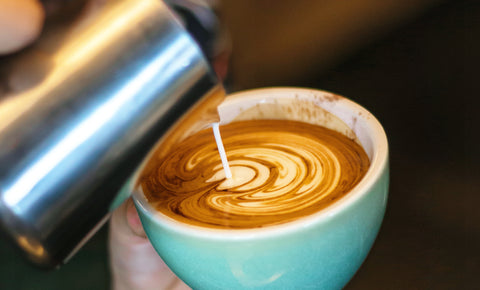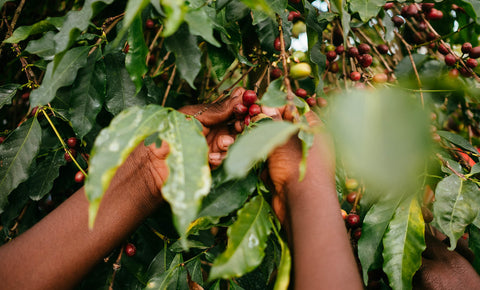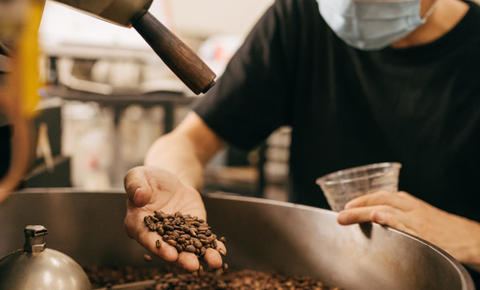
How do we measure speed? By using that old ‘distance divided by time’ formula from high school science, right? Sure, kilometers per hour or meters per second are the usual measures of rapidity, but in the coffee industry we’re more interested in cups per day as our unit of measurement; how many cups a café produces on a busy day can be a badge of honour or something to drop proudly into the conversation around the communal cupping table.
But as every busy barista will tell you, when the orders come streaming in and the printer starts to spit out dockets like an aggravated llama, the consistency and quality of the coffee being served tends to take a hit. So it seems as if there’s a constant battle between wanting to be as busy as possible and brewing the best quality, most consistent coffee possible.
But is service speed really at odds with consistency? Can you continue to serve at top-speed whilst still having the same amount of control over all the variables which make great coffee such a challenge to produce?
We at Common Man Coffee Roasters (CMCR) believe you can! But before we tackle the how, let’s talk briefly about what variables we need to be able to control and who looks after them. As the takeaway coffee queue begins to snake out the door, have a quick think about these issues -:
- Brew water temperature/pressure. These parameters should be controlled (or at least maintained) by your espresso machine. The stability of these variables is one of the key indicators of quality in a machine.
- Grind size. Your grinder should have this locked down for you, so make sure you’ve got it calibrated to your preferences well before the rush starts!
- Coffee dose amount. Whether you’re using an electronic or a manually dosing grinder, your baristas need to be on top of this variable as it’s the start of the brew ratio.
- Tamping technique. This needs to be consistent; always level and always firm.
- Coffee distribution. You’re aiming for an even brew bed to form an even resistance as the brewing water passes through the puck.
- Espresso extraction amount. Follow a recipe either by relying on a volumetric program or by using a scale and a keen eye. Your espresso extraction amount should be a consistent number and reflect your target brew ratio.
Reading this list of variables, it’s clear that to achieve great results at high speed, great emphasis must be placed on the quality of the equipment you invest in (including your scales). This equipment will be the foundation for eliminating variables, thus ensuring you produce high quality coffee with consistency. Once we take away our concerns over temperature, pressure, grind size and extraction amount, what’s left is our ability to hone both the process and our barista technique to a lethally efficient edge.
At the CMCR café, we get pretty busy. We’ve worked hard over the past few years to develop our processes to cope with producing upwards of 500-700 cups a day, whilst also producing the best quality brews we can.

This is our setup;
- Get a fast, but accurate, electronic dosing grinder. We recommend the Mazzer Kony E or Mazzer Robur E. They’ve got great speed and consistency and even at top speed, they rarely vary by more than .5 of a gram once you’ve set the timed dose properly.
- Buy a vessel for the coffee grounds to dose in to from the grinder. We’ve found these great little Tupperware-type things at Daiso which are all an identical weight (so there’s no need to tare them off constantly). They also fit the diameter of our VST Baskets perfectly!
- Get a really fast reading scale that reads down to .1 of a gram. We use the BonaVita Digital Scale which has a super-fast reaction time and settles even more quickly; this is crucial for speedy service.
- Use a comfortable, ergonomic tamper. We’re using a Pullman Wood tamper which fits in the palm of your hand very comfortably – this is something that can really drain the energy out of your arm if it’s not right. This tamper also has a beautiful flat tamping surface to ensure an even brew bed.
- Invest in an espresso machine which gives you control and consistently replicates that control for coffee after coffee. Of course, we swear by our [Synesso]<link> Hydra. These machines provide us with so much control over temperature, pressure profiles and volumetric programming that we’re able to dial in a recipe to suit each individual coffee’s characteristics and replicate that over the span of a busy day with the reliability of a Swiss watch.
There’s a bit to take away from this article and it’s not just the fact that investing in equipment is a necessary part of a café’s journey to coffee glory. I hope we’ve also shown that there are some small adjustments which can make a significant difference to both your operational speed and your ability to produce high quality coffees consistently.
As always, if you need any assistance or recommendations on how to step your speed game up, get hold of a friendly CMCR team member. We’d love to help!






